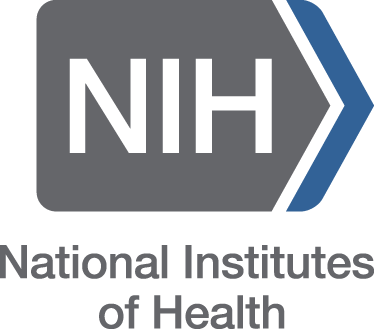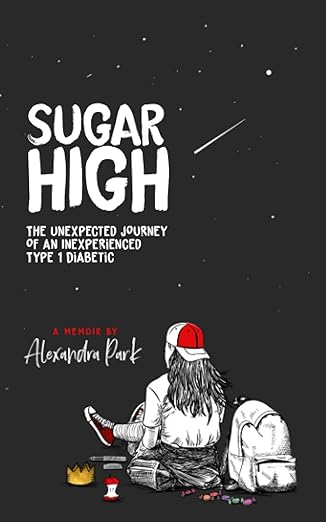Diabetes
Breadcrumb
Discover Health Information for Diabetes
About 1 in 5 people in the U.S. with diabetes don't know they have the disease.
Source: National Diabetes Statistics Report. Centers for Disease Control and Prevention (CDC)
Diabetes is a disease that occurs when your blood glucose, also called blood sugar, is too high. If you have diabetes, your body doesn’t make enough—or any—insulin, or doesn’t use insulin properly. Glucose then stays in your blood and doesn’t reach your cells.
Diabetes raises the risk for damage to the eyes, kidneys, nerves, and heart [PDF]. Diabetes is also linked to some types of cancer. Taking steps to prevent or manage diabetes may lower your risk of developing diabetes health problems.
November is National Diabetes Month, a time when communities across the country team up to bring attention to diabetes. The NNLM Reading Club has selected three books to help discuss the topic and share information to learn more about the disease.
 Discover MedlinePlus
Discover MedlinePlus
MedlinePlus is a service of the National Library of Medicine, the largest biomedical library in the world. Use MedlinePlus.gov anywhere, anytime, on any device - for free - to discover high-quality health and wellness information that is reliable, easy to understand, and free of advertising, in both English and Spanish.
Search MedlinePlus for:
Discover NIH
 The National Institutes of Health (NIH), a part of the U.S. Department of Health and Human Services, is the nation’s medical research agency — making important discoveries that improve health and save lives. NIH is made up of 27 Institutes and Centers, each with a specific research agenda, often focusing on particular diseases or body systems.
The National Institutes of Health (NIH), a part of the U.S. Department of Health and Human Services, is the nation’s medical research agency — making important discoveries that improve health and save lives. NIH is made up of 27 Institutes and Centers, each with a specific research agenda, often focusing on particular diseases or body systems.
The National Institute of Diabetes and Digestive and Kidney Diseases (NIDDKD) conducts and supports research on many of the most common, costly, and chronic conditions. It is the primary NIH agency discovering breakthroughs in diabetes research.
There is still much to learn about our complex bodies. However, improved technology and inquisitive minds help advance science and medicine. NIH-funded technological advances offer much promise. For example, using electronic health records and genomic data, scientists have identified what appear to be three distinct subtypes of type 2 diabetes. Source: Diabetes. NIH…Turning Discovery Into Health®. February 11, 2020.
Visit NIDDK's News to stay informed of the latest information and research on diabetes.
14th annual James H. Cassedy Lecture in the History of Medicine from the National Library of Medicine
Diabetes has played a key role in multiple twentieth century movements from the Progressive era to Black Lives Matter. Diabetes is also a window into the many complications of this chronic disease, including amputations, chronic kidney failure, disability, and the ramifications of racism as a public health threat. The many complications of diabetes reveal questions of structural inequality, environmental racism, and medical neglect that inform disease experience. NIH Record: Diabetes History Has Present-Day Implications
Discover More
Types of Diabetes
How people with diabetes manage their blood glucose levels depends, in part, on the type of diabetes they have. The most common are type 1, type 2, and gestational diabetes.
- What is Type 1 Diabetes? (CDC)
- Type 2 Diabetes (CDC) Type 2 diabetes is the most common. It occurs when either your body’s cells have trouble using insulin or your body doesn’t produce enough insulin to handle the glucose in your blood. What is Type 2 Diabetes? [PDF]
- Gestational Diabetes (CDC)
Fact Sheets
- Insulin [PDF]
- Notecard: A1C Test For Diabetes [PDF]
- Fast Facts: Data and Statistics About Diabetes [PDF]
- Your Glucose Meter [PDF]
Associations
The American Diabetes Association (ADA) raises awareness for the disease. The organization funds programs to educate and promote diabetes and to help families and communities discover and use tools and resources.
Children's Books

Turning Pages: My Life Story | Sonia Sotomayer | Penguin Random House | 2018 | ISBN: 978-0525514084 | 4-8 years | World Cat
The Eagle Books are a series of books for young readers that encourage healthy living. They were developed in response to the burden of diabetes among Native Americans and the lack of diabetes prevention materials for Native American children. The colorful, Native American inspired characters in the stories promote healthy eating, physical activity, and diabetes awareness. Visit the Native Diabetes Wellness Program to download the free books and to discover supporting materials.
Breakthroughs in Science
"I was interested in understanding how the rise in blood sugar causes insulin to be released in the pancreas.... And what we found .... is that mutations, genetic defects in the gene that makes this tiny pore, cause it to always be open, so of course no insulin is ever released." Transcript
Featured Books
-
Title: BreakthroughPublisher St Martin's PressYear published 2010Book image

-
Title: NeedlesPublisher ScribnerYear published 1998Book image

-
Title: Sugar HighPublisher Rbl StudiosYear published 2021Book image

Terms of use: Network of the National Library of Medicine (NNLM) staff offer these health discussion resources for educational use. The materials included do not necessarily reflect the views or opinions of the author, publisher, or the sponsoring agencies of the National Library of Medicine (NLM) and the National Institutes of Health (NIH).
